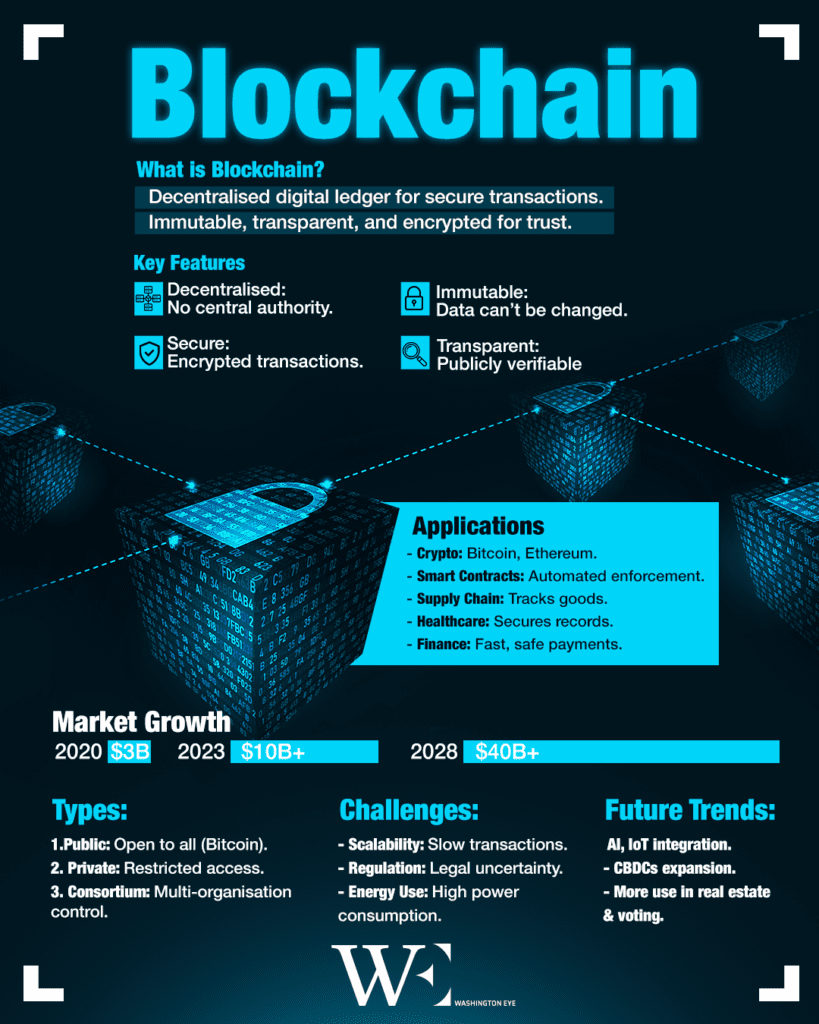In today’s digital age, fake news has become a widespread issue, with far-reaching consequences in politics, public health, and social discourse. Misinformation spreads faster than ever before, often resulting in confusion, fear, and division. As the world increasingly relies on digital platforms for news and information, the need for effective solutions to identify and mitigate fake news has never been more critical.
Thankfully, advancements in two key technologies—artificial intelligence (AI) and blockchain—are emerging as powerful tools in the fight against misinformation, offering innovative ways to detect, verify, and trace the origins of fake news.
Artificial intelligence has evolved rapidly in recent years, bringing unprecedented capabilities in data analysis and decision-making. AI systems are now capable of processing vast amounts of data, identifying patterns, and detecting irregularities that may be indicative of fake news.
One of the primary tools AI uses to combat fake news is Natural Language Processing (NLP), which enables machines to understand and interpret human language. NLP algorithms are trained to analyze written content and identify inconsistencies, biases, and misleading language, all of which are common features of fake news. For example, NLP can be used to analyze news articles for signs of sensationalism, clickbait headlines, or emotional manipulation—techniques often used by purveyors of fake news to sway public opinion.
By recognizing these patterns, AI can flag articles or posts that may not align with factual information. This kind of analysis can also help identify content that spreads fear, hatred, or division, which is often characteristic of fake news.
Another key AI component in detecting fake news is machine learning (ML). ML algorithms are designed to learn from data, improving their accuracy over time. In the context of fake news detection, ML algorithms can be trained on vast datasets of verified and false information, allowing them to differentiate between credible news and fabricated stories.
Machine learning models can cross-reference claims in news articles with trusted sources such as government reports, academic studies, or reputable news outlets. For instance, a machine learning algorithm might be used to check the accuracy of claims about a scientific breakthrough by comparing them with peer-reviewed journals or authoritative databases. If the claims in an article deviate significantly from trusted sources, the AI system can flag it as potentially false or misleading.
AI can also play a critical role in monitoring how news spreads across social media platforms. Through sentiment analysis, AI can assess the emotional tone of online conversations surrounding a piece of news. Fake news stories often generate intense emotional reactions—such as outrage or panic—which can signal that the information may be misleading or false.
AI systems can also track the speed at which a news story spreads, helping to identify viral content that may not have been properly verified. By analyzing social media trends, AI can quickly flag suspicious stories and prevent them from reaching larger audiences, thereby reducing their impact.
While AI excels in detecting and analyzing fake news, blockchain technology offers a complementary solution by providing a secure and transparent method for verifying the authenticity of news content. Blockchain’s decentralized and immutable nature makes it an ideal tool for tracking the origins of information and ensuring that content remains unaltered throughout its journey.
Blockchain operates through a distributed ledger system, where data is stored across multiple computers rather than in a centralized location. This structure makes it nearly impossible to alter or manipulate data once it has been recorded. By applying blockchain to news content, every article or post can be assigned a unique digital fingerprint (a hash), which is stored on the blockchain.
Blockchain can also integrate smart contracts, which are self-executing contracts with terms directly written into code. In the context of news, smart contracts could be used to set specific standards for what constitutes trustworthy journalism. These contracts could be programmed to ensure that news articles are fact-checked before they are published, creating a system of accountability for content creators. For example, news organizations could sign a smart contract committing to verify the accuracy of their reports before publication. If they fail to meet these standards, they could face penalties or be flagged as unreliable sources. This system could encourage greater responsibility in journalism and reduce the spread of fake news.
Blockchain can also provide a transparent record of the sources behind news stories. Often, fake news spreads when the original source of information is either unknown or intentionally concealed.
By recording the history of a news article on a blockchain, journalists and readers alike can trace the origin of the content. This process of attribution can be especially useful for combatting rumors or hoaxes that often circulate on social media. Blockchain’s transparency ensures that users can track the journey of a news story, making it difficult for bad actors to publish false information without accountability.
While AI and blockchain can independently help tackle fake news, their combined use presents a powerful, multifaceted approach. AI’s ability to analyze and detect fake news complements blockchain’s capacity for verifying and securing the authenticity of content. For instance, AI systems can flag suspicious articles, while blockchain can trace their origins and ensure they haven’t been tampered with. Blockchain can also store a record of the fact-checking process, providing a transparent history of how the news was verified. This collaboration creates a robust system that not only detects fake news but also ensures that verified, accurate information is accessible and reliable.
As AI and blockchain technologies continue to evolve, their potential to combat fake news will only increase. However, challenges such as scalability, privacy concerns, and the risk of misuse must be addressed before these technologies can fully realize their potential. Ensuring that these tools are accessible and reliable for both media professionals and the general public will be crucial for their success.
Nevertheless, AI and blockchain offer a promising solution to the growing problem of misinformation. By providing more accurate, transparent, and trustworthy methods for detecting and verifying news, these technologies have the potential to restore trust in digital media and create a more informed global community.
In the battle against fake news, the combination of AI and blockchain is not just a trend; it’s a necessary evolution that could reshape how we consume and trust information in the years to come.













